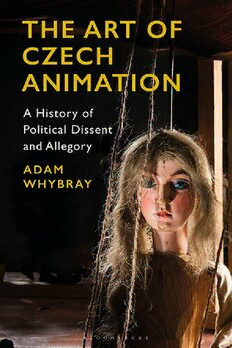
The Art of Czech Animation: A History of Political Dissent and Allegory PDF
305 Pages·2020·2.579 MB·English
Most books are stored in the elastic cloud where traffic is expensive. For this reason, we have a limit on daily download.
Preview The Art of Czech Animation: A History of Political Dissent and Allegory
Description:
This is the first book-length study to specifically examine Czech animated cinema, stretching from the immediate post-war works of Jirí Trnka and Hermína Týrlová, through Jan Švankmajer’s internationally recognised stop-motion projects, to contemporary animations by the likes of Michaela Pavlátová and Jan Balej. The book’s central argument is that the political messages of these films are communicated primarily through on-screen objects and things, rather than through dialogue or narration. This ties into the theme of allegory as a form that can circumvent censorship, allowing artists to surreptitiously make critiques of a regime without persecution.The book develops and implements a materialist methodology usable within Film and Media Studies, integrating several of the assumptions and methods of Bill Brown's Thing Theory, Bruno Latour’s Actor-Network-Theory, and Henri Lefebvre’s Rhythmanalysis. In short, it is object-focused with close analysis given to individual scenes and the rhythms of editing patterns. Although concepts from psychoanalysis and debates on national cinema would be discussed, it is intended as a work of ‘film theory’, not ‘Film Theory’ with a capital ‘T’ as per David Bordwell’s distinction.
See more
The list of books you might like
Most books are stored in the elastic cloud where traffic is expensive. For this reason, we have a limit on daily download.
